The One That Got Away
Jose Wejebe’s TV show, 'The Spanish Fly,' brought charm and character to sport fishing. His death left a hole below the waterline in everyone who knew him.
Jose Wejebe was more than a saltwater fishing guide. He was a filmmaker, a pioneer, and the host of ‘The Spanish Fly,’ one of the most beloved fishing show ever made. From his early days guiding in Biscayne Bay to his final cast chasing tarpon in the Everglades, Wejebe changed the way anglers saw the sport and the sea. This tribute explores his life, his groundbreaking television work, and the haunting beauty of his final episode.
A special thank you to Krissy Wejebe and the Wejebe Family for generously providing all the images for this article.
Jose Wejebe sits on a stool, his once-long hair cut short and showing some gray, skin tanned to the deep auburn common only to surfers and fishermen, unaware that he is going to die. Text underlay on the screen announces silently that it is April 5, 2012. Wejebe is talking about the tarpon he has spent the last two days desperately trying to catch with a fly rod. He is, as usual, spellbinding. “If there ever was a fish that was made for saltwater fly fishing, it’s the tarpon,” he tells you. You believe him.
Wejebe must’ve felt good about this, the third episode of the eighteenth season of his fishing show, The Spanish Fly. He was well-practiced at his job, smoother than most anyone in front of the camera, obviously unscripted, passionate — the perfect protagonist to hook any viewer, even one who’d never touched a fishing rod in his life. He had no clue that he was almost to his own end now, ticking through a timeline that had dwindled from days to hours to minutes toward the last fish of his life. Or that this episode’s name would be changed to Jose’s “Last One”. That it would open not with the first scene he and his crew had shot, but with a eulogy.
But that’s exactly what happened to perhaps the world’s greatest saltwater fisherman, and surely its greatest fishing-show host.
Jose Wejebe’s death would be the greatest surprise of his life, both to him and the people who worked with and loved him. But to those he left behind — his family, friends, crew and fans — there was another surprise coming. Out of Wejebe’s death would come his magnum opus, one of the single greatest episodes of a fishing show ever made.
You remind yourself as you watch him that he doesn’t know what’s happening. That the majestic way he sits, soaking up the Florida sun, stems from the fact that he’s doing what he’s meant to do, not because he knows these are his final hours. To Jose Wejebe, all that lies ahead is more fishing.
When I was a kid, Saturday mornings spent with my father in rural Pennsylvania, meant turning on ESPN2 to watch the only sports we had in common: hunting and fishing. Dad liked the hunting shows, big bucks and wild hogs and turkeys dropped from 100 yards by sharp-shooting good ol’ boys. I liked the shows about fishing.
The 1990s were a boom time for outdoors shows thanks to the ESPN Outdoors block, the first (and last) time that hunting and fishing landed on a mainstream sports network. Viewers tuning in a few hours before the first noon college football game got a heavy dose of rifles and reels. The quality of the shows ran the gamut. One, the Walker’s Cay Chronicles, hosted by bearded flats-hippie-extraordinaire Flip Pallot, struck me as cinematic and insightful. But more often than not the shows felt amateurish, with poor production values and hosts who ranged from slightly entertaining to difficult to watch. Creativity was not a strong suit. Nor was storyline, editing or nuance of any kind. “We made a lot of bad shows,” Jerry McKinnis, the producer of the Outdoors block and longtime host of The Fishing Hole, one of the earliest and longest-lived such shows, admitted when I spoke with him.
The truth is, making a fishing show is remarkably difficult. By the early ’90s, the formula had been set: Crews spent three full days shooting a host and his guest fishing in one body of water for one kind of fish, then strung together the catches and chitchat into 23 minutes of airtime. But throwing together disparate portions of a fishing trip produced no narrative arc, and most fishermen failed to be entertaining and interesting while they focused on catching fish. To narrate their catches, some tried to use voiceovers, which were inevitably dry or corny. Watching a stranger catch a few fish is a way to pass the time if you’re obsessed with the sport; it is not good television. It is certainly not art.
Some shows tried to compensate for these problems with alternate entertainment. Bill Dance famously staged falls from his boat and steep banks, spewing “gawsh dangits!” and bleeped expletives. Jimmy Houston kissed on the lips every big fish he caught. (Mimicking him became a craze among bass fishermen, despite doctors’ concerns about salmonella and the parasite giardia.)
I could tell The Spanish Fly was different, even at a young age. When it came on, heralded by a rambling flamenco guitar intro, I would stop whatever I had been doodling and become riveted to the TV. My dad, the hunter, might grumble, but he too would stop what he was doing and watch. For the next 30 minutes, we were overcome by the wonders of saltwater fishing, a sport we had never tried or understood. I was two hundred miles from the sea, yet I could smell it in the room.
Wejebe was the perfect character to change the fishing show’s formula. The host of The Spanish Fly was in fact born in Cuba in 1958, escaping to Miami with his family after his father and grandfather were jailed for speaking out against Castro’s revolution, and the family’s property seized. In South Florida, he and nine family members lived in a two-bedroom house. The saltwater playground of Biscayne Bay became his escape from reality. His stepfather taught him to fish, and he fell in love with all things aquatic. Stu Apte and Flip Pallot, two icons of American fly fishing and some of the first to promote the sport through writing, photography and video, became his heroes and, eventually, his mentors.
By age 18 Wejebe had his own boat and was guiding in the inshore waters of the bay; weekends, he worked with dolphins at the Miami Seaquarium. Eventually, he became a full-time guide. Speaking two languages helped, as did his natural sense of humor. In 1994, McKinnis, the producer of ESPN2’s Outdoors block, saw Wejebe guide during a celebrity bonefish tournament. He was looking for a host for a new saltwater show.
“There’s guys that’ve got it, and guys that don’t,” McKinnis said. “I could spot it. He was a really good-looking guy. His charisma was off the charts. He had a good voice, talked very well and was extremely smart. If you’re looking for a television personality, those are good starts.”
There was one more thing. “In the beginning,” McKinnis told me, “I didn’t know he would tell stories like he did.”
That would soon become apparent. Wejebe was deeply taken by The Walker’s Cay Chronicles, Flip Pallot’s fishing show, one of the first to follow a tight narrative arc and explore epic scoring to fighting big fish. But the voiceovers on which Pallot relied were carefully written and edited. Together, Wejebe and McKinnis decided on something else. Wejebe’s show would cut between Jose fishing with the episode’s guest guide, and a special sit-down interview conducted at the end of every trip. Wejebe kept scrupulous notes during each shoot, and used the sit-down section to fill in gaps in the narrative he had crafted during the trip. It worked. Splicing the interview into the episode created an extra layer of storytelling that no fishing show had ever reached.
There were other advancements. Wejebe would sit in on editing sessions — almost no host has done this, before or since — providing last touches of input to get the episodes just right. He became obsessed with the show’s cinematography, pushing his producers to use the highest-quality shooting gear. Wejebe wanted viewers to understand why fish acted the way they did, so he built his own underwater film gear and learned how to capture footage while diving himself. To show what trolled bait looked like from a fish’s point of view, Wejebe would dive into the water and tell his guest to drive the boat directly over him.
“That was the big thing that set my father apart from other guides,” said Krissy Wejebe, Jose’s daughter. “He got wet. What my dad used to do was get dropped off at a reef. He had his re-breather, and he would just sink to the bottom and watch the fish. Not what their behavior was like when there was a boat over top of them, but where they live, naturally. How they were eating. He was getting a different perspective, so he could learn how to apply that from above the water.”
The shots Wejebe captured were jaw-dropping to fishermen, and became so integrated with the series that you could know it was his show before hearing a word — any shot of a big, toothy saltwater fish chasing a ball of bait underwater meant you were watching The Spanish Fly. Later, when Wejebe built his own plane, he and his cameramen fashioned special camera rigs to use for aerial footage that could show viewers gorgeous shots establishing the big picture: small sandy islands surrounded by deepening shades of blue — the darkest rivulets highways for fish, the lighter flats their hunting grounds.
Then there was the final flourish: classical music. That was not Wejebe’s idea. “Jose said, ‘You want to do what?’ ” said Mike McKinnis, Jerry McKinnis’s son, who also produced the show. “He had this idea of Walker’s Cay, which used this dreamy, beautiful music.” Jerry McKinnis insisted. “We used anything we could get our hands on — operas, symphonies — and it worked perfectly for what he did,” Mike McKinnis said.
Classical music lent the traditionally arduous movements of fishing — poling the boat along the flats, throwing long casts, setting the hook when a fish attacked the fly — the air of a ballet. One segment features two minutes of Wejebe catching baitfish with a throw net, something almost no host had ever thought to feature — cutting between Wejebe on the shore, explaining how he found the spot because of its geography, to Wejebe on the boat, reeling drunkenly as the boat rolls in the swells and preparing to throw the net, to the fish underwater, schooling and flashing. It’s set to George Bizet’s Carmen Suite #2, Bohemian Dance, the editing perfectly in time with the music so that each character has its own theme: fluttering, playful flute for Wejebe on the boat and loud, angry woodwinds for the fearful baitfish. When Wejebe throws his net, the whole orchestra takes off, turning the fight, otherwise routine, into an epic battle.
In the end, these details were excellent bait; Wejebe himself was the hook. If his bodybuilder frame, dark skin and black mustache were drastically different from the look of other outdoor-show hosts, his demeanor was entirely familiar. His charm was irresistible. “He could’ve done his whole show in Spanish, and it wouldn’t have bothered me a bit,” Jim Kramer, an outdoor-show cameraman, editor and producer, told me. “I would’ve just read the subtitles.”
Wejebe wasn’t afraid to play the fool and goof around with his guests, but underneath, potent expertise lurked. (A love of slang and slouching friendliness makes comparisons to Anthony Bourdain surprisingly apt.) And he was no fly-fishing purist. In a single episode, he would often switch back and forth between a spinning rod and fly rod as each cast dictated.
Unlike other saltwater fishing hosts, who often used gaffs, killing the fish they caught, Wejebe was obsessed with the health of his catches and almost always insisted on practicing catch-and-release. In this way he verged on environmentalism, a bad word among sportsmen, most of whom insist upon the management and balance inherent in the word conservation. His episodes were rich with descriptions of ecosystems, and sometimes hinged entirely on the topic; in one, “Ghosts of the Everglades,” he and a friend visited a snook fishery a year after a massive fish kill to check on the recovery of the species. In one episode, he catches a permit. Holding it aloft, he declares “Now, this is what you call a palomita.” I assumed it meant “fat one” or “big mama” — the sort of thing other fishermen would say about a big fish. It’s slang for “little dove” — a nickname for one’s mistress.
It all made for a huge hit. The Spanish Fly quickly garnered the best ratings of any outdoor programming on ESPN2. Wejebe was an early adopter of Facebook and social media, which buoyed his fan base and gave him reach far beyond any other fishing show. It survived when ESPN canceled the entire Outdoors block in 2010, moving to the Outdoor Channel.
In 2012, for the show’s eighteenth season, Wejebe had secured new major brands as advertisers. He was considering launching a second show as a producer. Then, having spent three days shooting a show about fishing for tarpon in the Everglades with friend and fellow guide Jeff Legutki, Wejebe took off in his homemade experimental airplane from Everglades City airport in heavy winds. The plane veered sharply to the right, plummeted and smashed into the ground. Wejebe was pronounced dead at the scene.
***
There is an almost inexplicable link between fishing and death. It’s not always there for all fishermen. But sometimes we feel it, and the most eloquent are able to explain it. Norman Maclean is “haunted by waters” in A River Runs Through It. In The Old Man and the Sea, Hemingway gives the old man, Santiago, a melancholy thought while he fights the marlin: “Everything kills everything else in some way. Fishing kills me exactly as it keeps me alive.”
A fishing guide in the Catskills once told me that he never understood how much he loved fishing, and why, until his daughter was diagnosed with terminal brain cancer. Alone, on the stream, was the only place he could come to terms with the death on its way to his daughter.
When my grandmother died, I spent hours and hours, like that Catskills guide, alone on Spring Creek near Penn State University, pondering why we die and why we live. It helped to fish, somehow. Perhaps because I was witnessing a constantly cycling ecosystem that was both wholly beautiful and wholly vicious. Perhaps because when we stare at the fish we’ve caught, and decide whether to release them or eat them, we understand that the same ruthless greater power exists over us.
“The meaning of life is that it ends,” as Kafka said. He must have been a fisherman as well as a philosopher. It’s easy to imagine him sitting on an Austrian riverbank, rod in hand, waiting for a bite, pondering.
***
After Wejebe’s death, his colleagues and friends faced a nightmare. On top of that, they needed a final season, and their host was dead.
Their solution was a remembrance series spanning Wejebe’s career. They invited a cohort of his friends and fellow guides — fishing royalty — to tell their stories about Jose in sit-down interviews, which were then spliced among narrated segments from previous episodes. The result was stunning: thirteen episodes of a fishing show that were less about fishing and more about a man’s life.
It was an incredible feat for the show’s crew, who had just lost a friend. “It was definitely unnatural mourning,” editor and producer Tim Schick told me. “Usually when you have a loss in life like that, there’s those progressions of anger and denial and acceptance and the natural mourning period. For us, it lasted six months. It was extremely difficult, and it took its toll. I’ve never quite recovered from it.”
The final episode of The Spanish Fly shed the friend-interview format to show Wejebe’s last fishing trip, including the hours just before his death. Wejebe is fishing for tarpon in the murky waters where the Everglades meet the sea with Jeff Legutki, a pal and an excellent tarpon guide. For three days they are skunked — fish after fish after fish the size of a doberman swallows Wejebe’s fly, leaps once, maybe twice, and throws the hook. About halfway through the episode, it becomes clear, given how many fish Wejebe has lost, that this is really the quest to land the last fish of his life.
Jose’s “Last One”, as it came to be titled, is adorned with all the hallmarks of The Spanish Fly. It has a powerful narrative arc: the insane difficulty of tarpon fishing; how persistence, edged with tiny touches of expertise, can be used to tear open the toughest days on the water.
Expertly interwoven layers of footage — underwater shots of schooling tarpon, intricate fly tying that provides the backstory of the fly Wejebe will use — add depth and a sense of place that lives and breathes. Wejebe gives a master class on catching tarpon, with the usual focus on the little tricks that make a big difference: how to turn a cooler into a casting platform, following bubbles on the surface to guess where the fish has gone. And although the episode lacks the show’s trademark classical soundtrack in favor of more low-key, sober music, Wejebe’s energy is as unbridled as ever. At one point, when a tarpon throws his hook, he raises his rod in both hands above his head, the motion of an angry man about to snap a pole in half, and instead howls peals of laughter into the flats.
Then there are things that align in such a way that it’s hard to believe, that made me feel not so silly for forgetting that Wejebe wasn’t around somehow, editing from beyond the grave, having written the script knowing where things were headed. It’s his first and last trip on a new boat. His first and last time using a reel made by his good friend, fly-fishing legend Ted Jurascik — Wejebe’s name inscribed on it like an epitaph.
His last fish was the one he would’ve chosen himself. “People would always ask him, if you can catch only one fish, what would it be?” said Mike Torbisco, a cameraman and Wejebe’s protégé who was there that trip, filming the show. “And he would always answer that it was tarpon.”
Behind Wejebe as he conducts his sit-down interview, footage used throughout the episode, are two dry-docked boats, their hulls peeling with age. The name of one, seen just over his shoulder, is Last One.
The single best shot of the episode is set there. The boat sitting silently, broadcasting its foreboding message, whispering a future no one can hear. Wejebe’s chair empty. And then, like a ghost, he slowly appears again to talk about his last fish in a way that feels like he knows it’s his last fish.
“Some days it’s easy to catch fish,” he says. “But the ones that are really rewarding are the ones you really have to work for. The ones that you have to use everything you learned over the years just to make that one catch. And you take that one catch, and the sum of everything else you did, with a friend —” He pauses, and you think he’s about to say that it’s a great end to one’s life. Instead: “— It’s a pretty good few days in the ’Glades.”
Then, off camera, he asks, “We good?” He nods to himself. And like that, he’s gone again, this time for good.
“They happened to leave that camera on in the field during Jose’s interview and let it roll for four or five minutes after he walked out of the scene,” said Tim Schick, who produced and edited the episode. “I was watching his interview, and probably was in tears, and just let the tape keep rolling while I listened to him off camera. I was just wanting to soak up every last moment. When that camera stopped rolling there, that was the last time I heard from him. That’s where I got the idea to bring him in and then let him fade away.”
“It was just was one of the colors in the palette to paint that picture,” Schick said. “It felt like I was just doing what was supposed to be done.”
In the years since Wejebe’s death, no outdoors show has stepped up to fill the place left by The Spanish Fly as the uncontested greatest, Jerry McKinnis said. None has made non-fishermen feel so included and interested; none has taken the sport so seriously and elevated it with artistry; none has impressed so powerfully upon its viewers the precious and fragile nature of the environment they so adore.
But Wejebe’s legacy remains. His daughter Krissy runs the Jose Wejebe Foundation, which helps people with life challenges — kids with cancer, veterans, children in foster care — get out on a boat to fish and learn about the ocean. “My dad was always there to help whoever needed it at the time,” she told me. “If somebody’s boat sank and they needed a motor, he’d sell his to help them. That’s what we tried to do with the foundation.”
In Jose’s “Last One”, Wejebe finally does land that last fish, after a perfect cast and a long fight. When the fish is beside the boat, it becomes clear that at some point during the battle, the hook had come loose from the tarpon’s mouth and, in a freak accident, rehooked the fish in the dorsal fin. Wejebe plucks it loose like a flower petal and declares, “Did you see that? I barely touched that thing, and it just fell right out.” There is awe in his voice, like he’s just seen a miracle. When the fish splashes away, back into the dark water. Wejebe blows it a kiss.
“I’m so happy right now, you have no idea,” he says. “Life is good.”




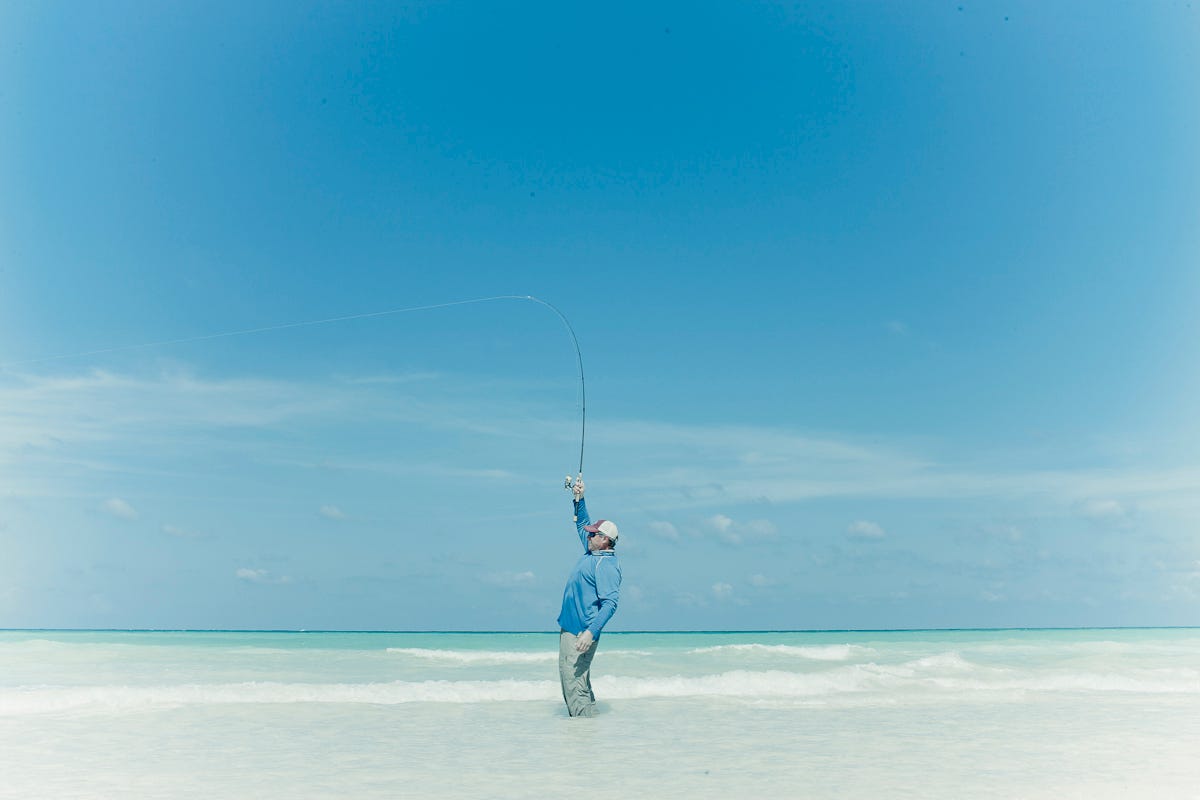
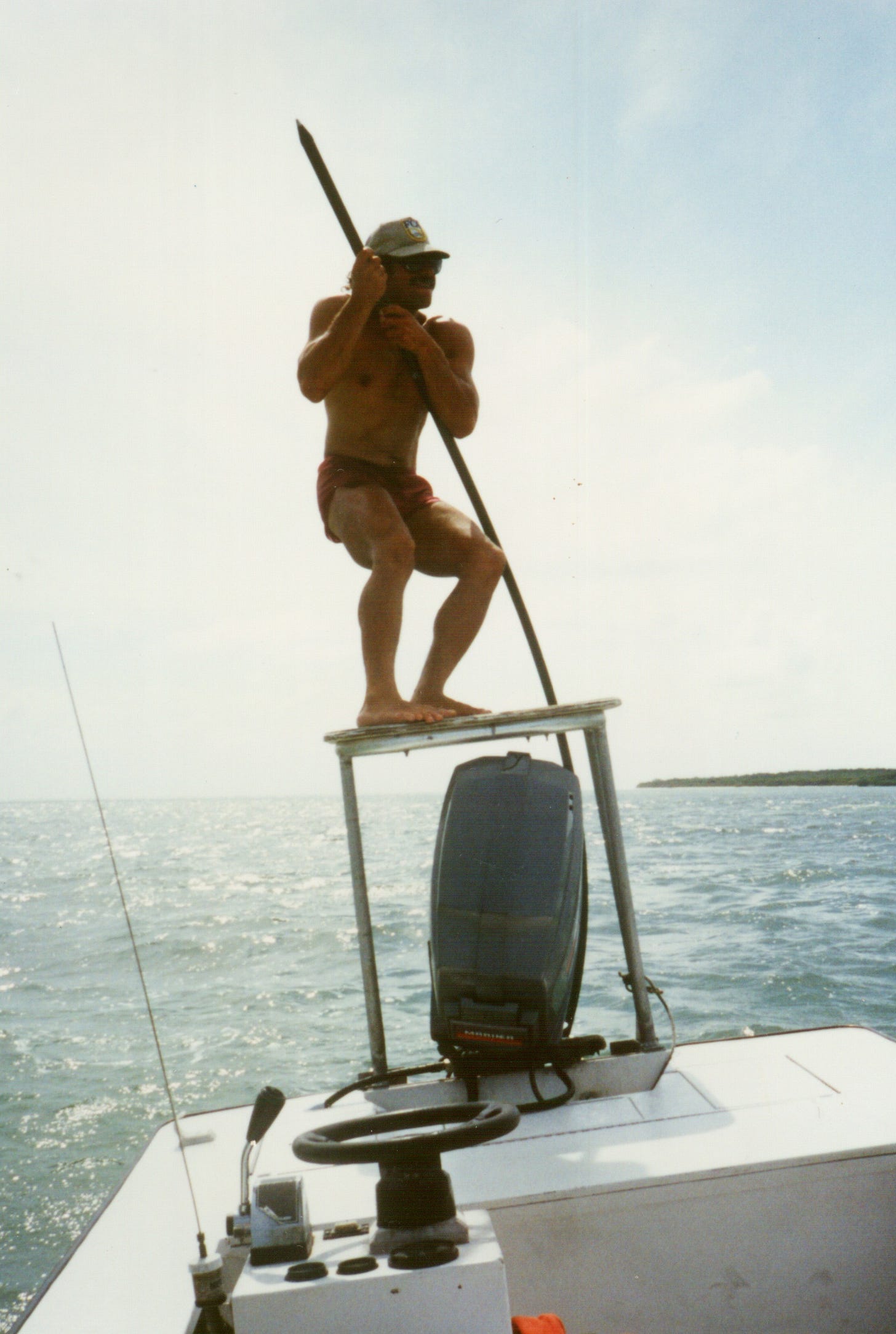
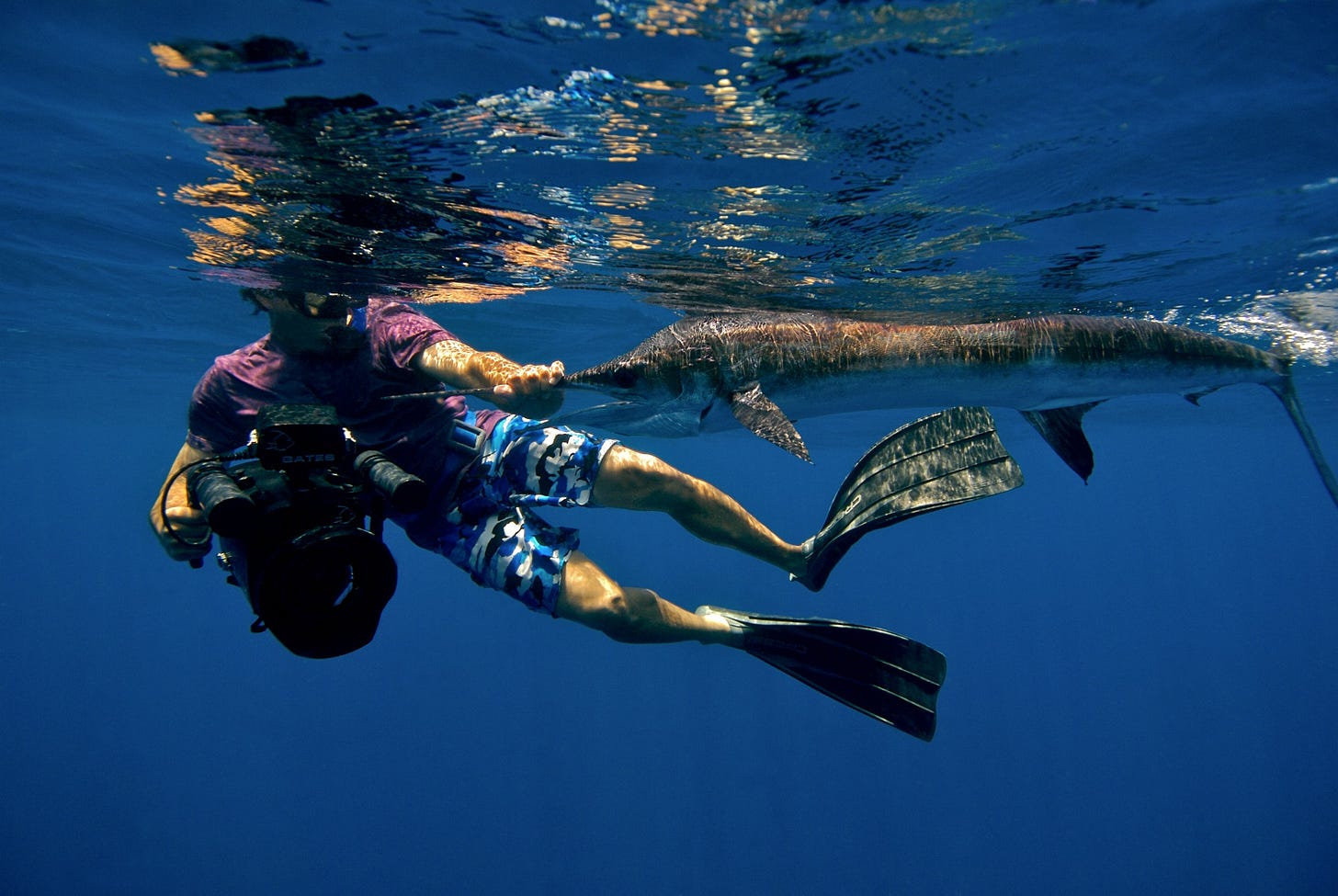
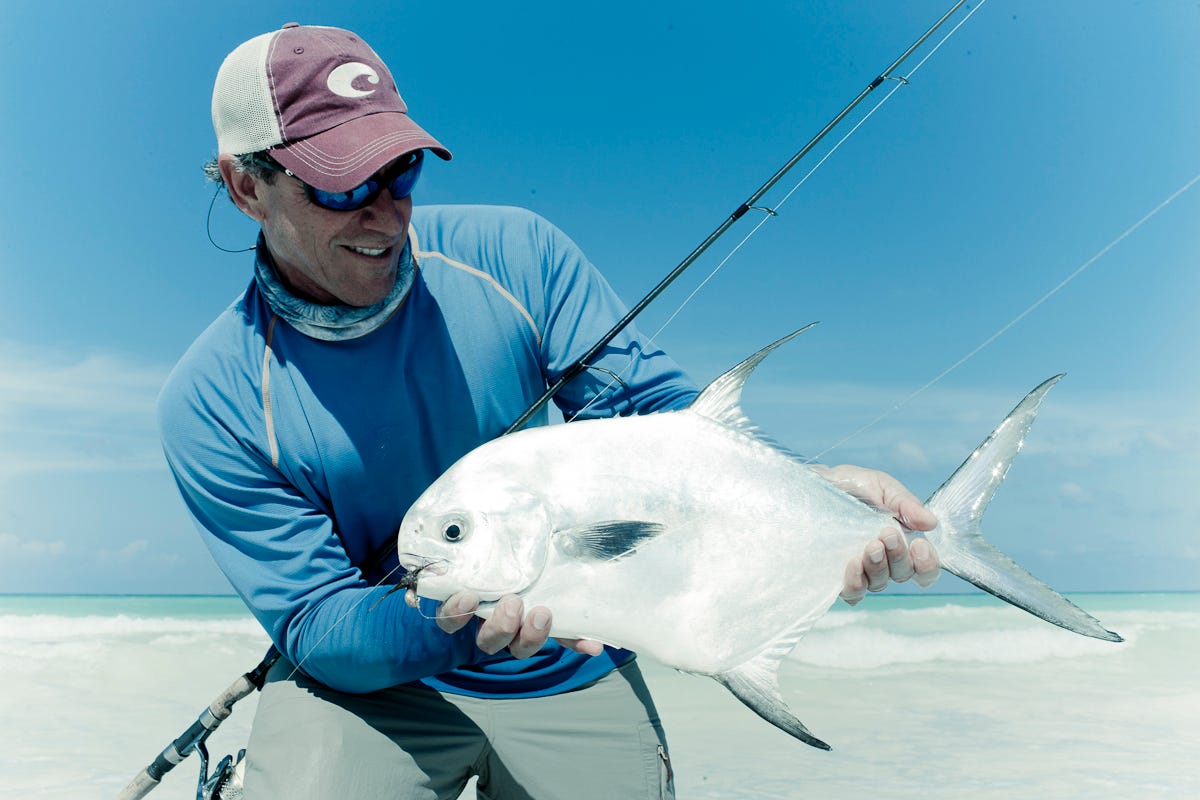
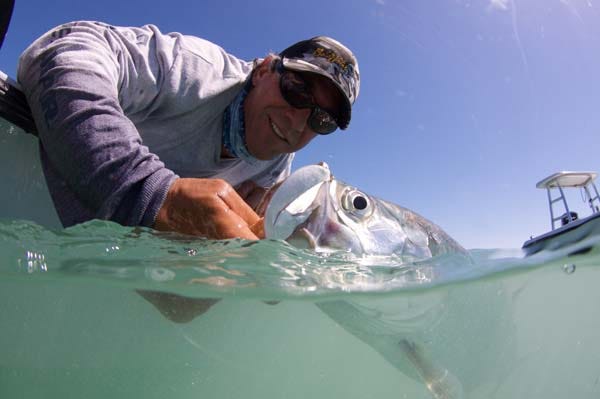
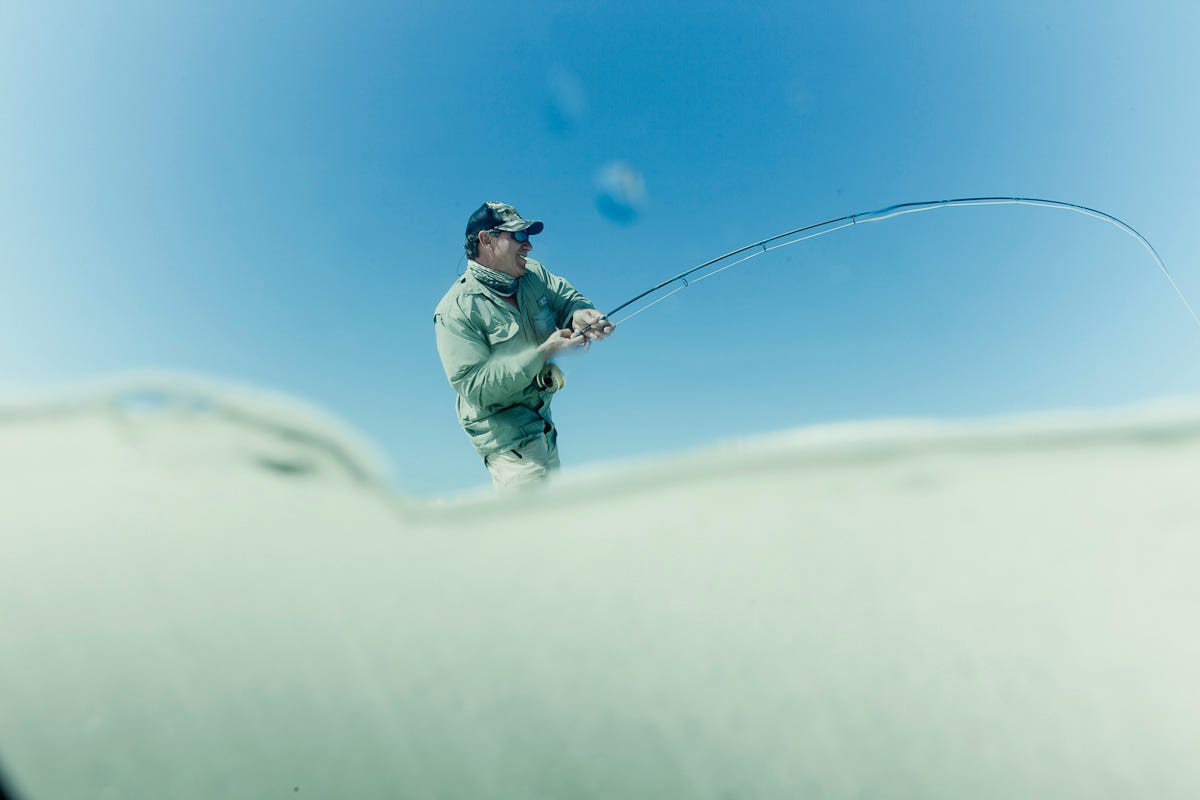

Wonderful story
This is a lovely piece. Thank you.